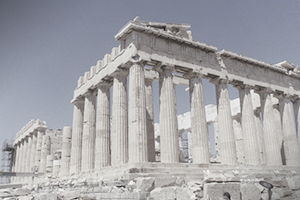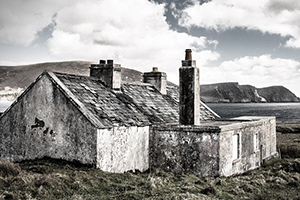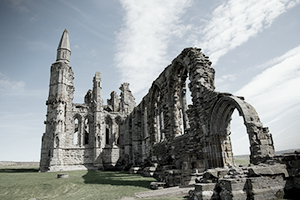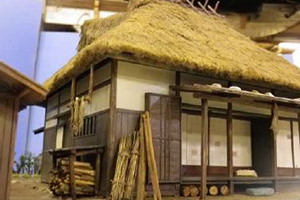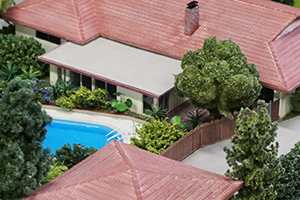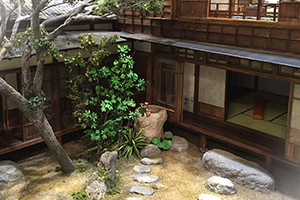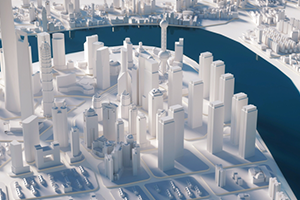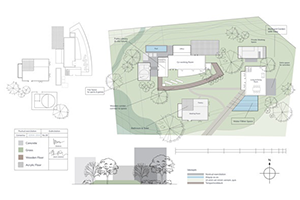5. Produce water surfaces, plantings, grounds, roads, etc.
Paint roads, building sites, etc., and bond fields and building facility bases.
Hardening process with trowel, heat gun, etc., and adhesion of stone walls, etc., to create styrofoam sections of mountains, hills, river sides, etc.
Apply colored plaster to mountain parts, hills, river sides, fields, dirt roads, and other soil-set areas, apply wave expressions to rivers and oceans, express road white lines, etc., and fix standing objects such as standing trees and utility poles.
Apply colored plaster to mountain surfaces, dirt roads, oceans, rivers, ponds, etc. Adhere multiple powder and crushed urethane in earth and grass colors to the areas set for soil sections. Pebbles, sand, etc. are used for riverbanks, seashores, etc. Express plantings with foliage in mountain areas, wastelands, gardens, etc.
In some cases, buildings may be fabricated and installed first, if it is more convenient to do so after the buildings have been placed.
6. Produce buildings.
If building facilities on the diorama are required, the following procedure is used to produce them.
1.Create the parts data of the building facility, and cut out the parts of the components based on the data. (The material of the parts will be selected according to the contents of the exhibition and the budget. Acrylic, paper, MDF, plywood, etc.)
2.Assemble the cut-out parts.
3.Paint the assembled building. (Base coating → basic coating → paint-by-paint. (Base coating → basic coating → paint-by-paint, aging coating if necessary). If painting after assembly is difficult, paint the parts as they are.
4.If commercial products are used, modification and processing will be performed as necessary.
5.If lighting is to be inserted into a building, silver paint or aluminum tape will be applied to the inside of the building to prevent light leakage.
7.Adjust placement and finishing.
Adjust the color for overall balance.
Clear-coat water surfaces such as oceans, rivers, and ponds.
Place and glue accessories such as cars, dolls, etc.
8. Adjust balance and complete the project
Look at the overall
balance of the diorama and adjust colors.
Apply clear paint to water surfaces such as seas, rivers, and ponds.
Complete the diorama by placing accessories such as cars and figures of people with glue.


